Let’s talk collars and leashes
Wondering about what type of collar or leash is right for your dog? Before diving into the various products available on the market, let’s first consider safety factors.
Safety for you, your dog, other people and other dogs.
It’s important to get the concept of walking your dog “in the pocket”. This means that he is walking side by side with you, by your left leg. He should not be in front of
you. He should be with you and under your control. Basic training will help you and him to master this, but having the wrong tools can lead to bad habits.
Here’s a little guide to give you some points to consider:
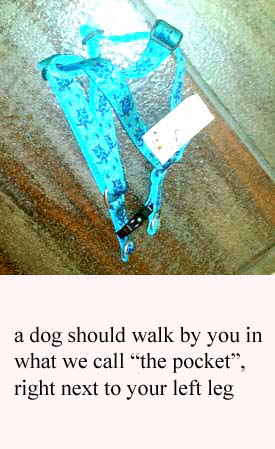 HARNESSES HARNESSES
The trouble with harnesses: If you are walking your dog with a harness, he will be walking out in front of you. When you are coming around the corner of a building or a tree, there may be a big dog on the other side that could attack your dog. You won’t have as much control to get your dog away from that situation. Or coming around a building there could be a skateboarder or a bicycler or someone with a cart. Because your dog is walking out in front of you, you won’t have time to act. Anybody could get injured. Remember – safety first. Really, a dog should walk by you in what we call “the pocket”, right next to your left leg. That takes a bit of training but it’s very much worth mastering because of these safety factors you’ll have with your dog. Who’s The Leader? Also, by them “walking out in front of you” means he is leading you vs. walking with you, so you are not the “pack leader” of the two of you walking together. And that puts Harnesses Cause Mats Harnesses on long-haired and curly-coated dogs will cause your pet’s hair to become matted, by rubbing the coat and skin back and forth. This creates nasty mats and tangles |
ID COLLARS
|
SLIP LEADS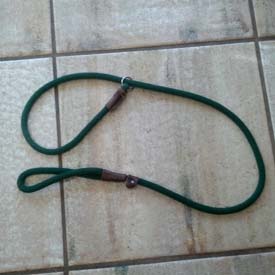
A good slip lead is fairly safe, but the dog needs to know how to walk in the pocket so that he doesn’t choke himself the whole time he’s being walked. You should also make sure it doesn’t get too loose so that he can slip out of it. If you are going to walk your dog on a slip lead, you need to walk him with the right tension – not to tight and not too loose. |
| COMBINATION COLLARS
|
| PRONGED COLLARS
|
CHAIN COLLARS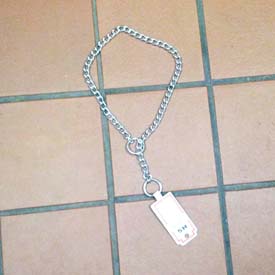
A Chain Collar, sometimes called a choker (bad name), is another tool for correction. It fits loosely around the neck similarly to the Slip Lead. The chain must be looped through one of the end rings. Your leash is connected to other ring. When you are walking your dog in the pocket using a chain collar you can give him a light correction by “snapping” the chain, causing a little tension and a click. This sound is to cue the dog and lets him know not to step out of the pocket. |
HEAD COLLARS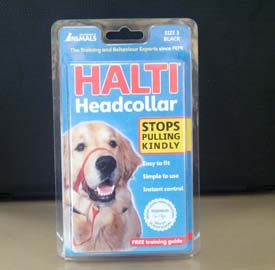
A Head Collar is similar to a halter that would be used on a horse. This is an excellent device. You need to make sure your dog gets trained to use this device. He needs to get used to it, so you put it on and leave it on him for 2 or 3 minutes and take it off. Then put it on again a little later. Gradually let him build up over a 3 or 4 day period, getting used to having it on his head. That is a very safe device to keep your dog under control. We’ve seen 90 lb women controlling 85 lb. pit bulls with it, for example. One client says she can control her big dog with her pinky with this type of collar. This is a very effective device, which gives you full control of your dog. Very effective. Very gentle. |

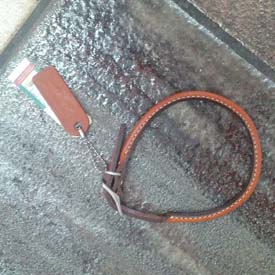
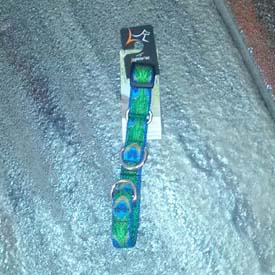
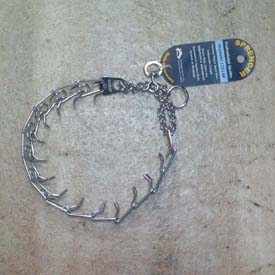



 1....
1....